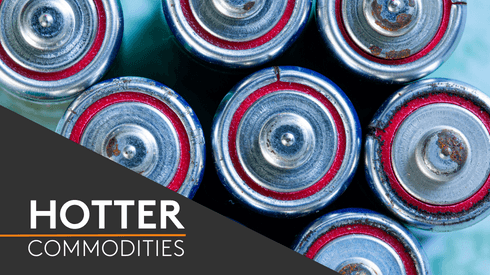Each metal – zinc, lead and copper – has been hit by specific supply disruption. However, industry sources have told Fastmarkets of shared factors that are affecting all three metals.
Fastmarkets’ weekly copper concentrates TC index, cif Asia Pacific is at a discount of $5.00 per tonne, according to the latest calculation on Friday June 21. This compares with a premium of $53.50 per tonne at the start of the year.
Meanwhile, the twice-monthly zinc spot concentrate TC, cif China is in a range of $(10.00)-20 per tonne as of June 14. This compares with a range of $60-100 per tonne at the start of the year.
Fastmarkets assessed the monthly lead spot concentrate TC, low silver, cif China at $20-30 per tonne on May 31. It started 2024 at $80-100 per tonne.
Supply demand imbalance on raw materials
Multiple sources say shared factors among these base metals are creating an acute raw material tightness.
For instance, there is a significant misbalance between raw material supply growth and demand, according to these sources. Mining investment has been significantly underfunded for a number of years, a number of market sources told Fastmarkets.
“There has been no capital for mines recently, lots of Western investment is going into [other areas],” a trader source said.
Sources noted mines are facing ever more stringent social, economic and environmental requirements, adding to costs and risk.
“It takes longer for projects to get off the ground,” Fastmarkets analyst James Moore said.
Sources noted that protests over environmental issues led to the closure of First Quantum’s Cobre Panama mine.The closure of First Quantum’s Cobre Panama mine is often cited as the main reason for the plummeting copper concentrate TCs. Cobre Panama produced 350,438 tonnes of copper concentrate in 2022, but late in November 2023 the contract to operate the mine was decreed unconstitutional by Panama’s Supreme Court of Justice. This forced the mine to close.
Within two months of the announcement, Fastmarkets’ copper concentrate index had fallen by more than half to $22.70 per tonne on January 26 this year, compared with $76.30 per tonne on November 17, the last assessment before the closure of the mine.
Sources highlighted that lead, copper and zinc mining have all been hit by issues in Latin America. Sources noted strikes, local opposition and permitting challenges among these issues.
Latin America is a region in which significant reserves for these minerals can be found, thus explaining mirrored tightness in these concentrate markets.
“Investment in Latin America has reduced, all the countries are having social and political situations, which disincentives mining investment,” the first trader source said.
“Companies are reluctant to invest in Latin America,” Fastmarkets analyst Andy Cole said.
Older mines and lower ore grades are increasingly commonplace, slow growth of new mining projects has meant the market increasingly relies on older mines with weakening ore grades.
“The [existing] mines’ grades are pretty much down across all of the Americas and Australia,” one miner source said.
“If you can find an untapped resources above 0.3% ore grade you’re doing well, previously [in the 1990s and 2000s] you’d have wanted 3%,” the mining source added.
Increased smelter capacity
Mine-side tightness is being aggravated by excessive smelting capacity across concentrate markets sources told Fastmarkets.
“There is excess smelter capacity and a lack of raw materials,” head of research at Concord Resources Duncan Hobbs said.
Sources noted specifically that smelters in China have expanded notably.
“Chinese investment has gone into industry and processing,” a second trader source said, adding this has led to overcapacity in the region.
Sources noted concentrate levels have been driven by specific supply disruption in each metal. However, extreme movement since then indicated tightness beyond individual disruption events.
Trader impact
Some sources claim that new traders, specifically trading houses that had previously focused on energy trading, were pulling down TCs.
“Others coming into the markets and getting into concentrates for the first time is adding to downward pressure on TCs,” Hobbs said.
Sources noted that copper TCs falling into negative territory could have directly affected the zinc concentrate market too. The sentiment in concentrate markets can feed into each other because a number of participants are involved across multiple metals.
“Commodities can have a bearing on other markets, people will think about moves in different markets,” Hobbs said.
Sources stated that some traders were willing to push into the market and not immediately make profit or that more established trading houses would be willing to take some losses to maintain market position.
“People really want to protect market share even if they lose money in the short term,” the first trader source said.
Sources noted traders were willing to agree concentrate purchases with negative TCs, across markets, despite limited smelter buying seen below $0 per tonne.
Sources told Fastmarkets there are a number of factors that support traders’ ability to bid aggressively on raw materials.
For example, sources noted that traders and smelter benefit from the high prices of precious metals contained in zinc, lead and copper concentrates, bringing down the headline TC number.
Multiple sources also noted that broad contangoes across the base metals complex were allowing traders to buy increasingly aggressively and still make profit on concentrate trades by using extended quotation periods (QP) on the sell side.
By using extended QPs, traders can benefit from higher futures prices.
“Long QPs have allowed traders to bid very low and sell higher,” a second miner source said, highlighting the wide contangoes.
“Nearby spreads are very wide, some of the widest contangoes we’ve seen in at least 35 years,” Hobbs said, adding that this benefits traders.
Inform your base metals strategy with metals price forecasts and analysis for the global base metals industry. Get a free sample of our base metals price forecast today.





